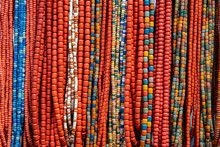 Adobe Community
Adobe Community
- Home
- Stock Contributors
- Discussions
- Need some help with images refused "Quality proble...
- Need some help with images refused "Quality proble...
Need some help with images refused "Quality problems"
Copy link to clipboard
Copied
Copy link to clipboard
Copied
DSC_9286.jpg - these look delicious, but you've cropped in too close, cutting off part of the subject matter. Also slightly underexposed according to the histogram.
DSC_7888-Улучшено-NR.jpg - underexposed and depth of field is too shallow, resulting in much of the image being out of focus.
Copy link to clipboard
Copied
Copy link to clipboard
Copied
DSC_7637-Улучшено-NR.jpg - underexposed, cropped too close (or should have been shot in landscape orientation), many unfocused areas
DSC_7654-Exposure.jpg - there are some out of focus areas, probably due to depth of field being too shallow
DSC_7923-Улучшено-NR-Exposure.jpg - zoom in to 100-200% and you'll see that most of the purple flowers are not in focus; the sun flare might have been a problem too
Copy link to clipboard
Copied
Do all areas need to be sharp? Is it no longer possible to highlight an object due to depth of field?
Copy link to clipboard
Copied
No, the entire frame doesn't need to be in focus, but DOF needs to be employed carefully. If much of the frame is out of focus and the main focal point is not even in sharp focus, it's probably going to be rejected. in image 7654, when you zoom in between100-200%, it's challenging to find anything in focus...
Copy link to clipboard
Copied
Adobe Stock customers expect the highest visual and technical quality for use in commercial projects. Read these links.
- https://helpx.adobe.com/stock/contributor/help/reasons-for-content-rejection.html
- https://helpx.adobe.com/stock/contributor/help/quality-and-technical-issues.html
- https://helpx.adobe.com/stock/contributor/user-guide.html/stock/contributor/help/photography-illustr...
- https://helpx.adobe.com/stock/how-to/tips-stock-image-acceptance.html
Alt-Web Design & Publishing ~ Web : Print : Graphics : Media
Copy link to clipboard
Copied
I understand that, but problem is technical quality, or non-commercial photos? Its not equal...
Copy link to clipboard
Copied
Moderators can only choose one rejection reason on each asset, presumably the first one they notice, though there may be multiple reasons to reject it. If focus problems are the first thing they notice, they will select "quality issues". But there could also be IP issues or lack of commercial appeal or other issues.
Copy link to clipboard
Copied
I understand that, but problem is technical quality, or non-commercial photos? Its not equal...
Copy link to clipboard
Copied
I don't understand your question. What do you consider a "non commercial photo"? All photos are required to meet the same quality standard in order to be accepted.
Copy link to clipboard
Copied
Exactly. But in reality it doesn't turn out the way you say. I don’t know who evaluates photos for compliance with their quality, but I can’t understand why lately there have been many failures precisely because of the quality discrepancy, although these works do not differ in noise or other indicators from the works that I previously filed, and they were accepted without any problems. Therefore, I had a question regarding quality requirements. As for the "non-commercial photo" - once some stocks were denied for this very reason.
Copy link to clipboard
Copied
Moderators are human beings, therefore there can be a certain amount of variability in their decisions. Additionally, quality standards do become more stringent over time because of technological improvements in both the equipment and processing software. An image captured with my entry-level Canon Digital Rebel 15 years ago looked pretty good at the time, but wouldn't make the cut now...
Copy link to clipboard
Copied
I'm also puzzled by your remark. Stock does not accept snapshots. Snapshots are for social media (Instagram, Flickr, Facebook...).
Stock is a commercial assets business. Whatever you submit to Stock must be suitable for commercial use. Customers decide how the assets will be used. You don't decide that.
Highest technical & visual quality is essential for printed posters, promotional materials, websites, product packaging, billboard or magazine ads, T-shirts, tote bags or TV commercials. If you're not creating high quality work, don't submit it to Stock.
Alt-Web Design & Publishing ~ Web : Print : Graphics : Media
Copy link to clipboard
Copied
Strange, but before such problems were not. Stock accepted such works, and I did not see any messages about a change in the acceptance policy. Also, why then my work is not accepted due to quality problems, and not with another wording, for example - "non-commercial image" ...
Copy link to clipboard
Copied
I believe another consideration is the subject of the image. Adobe Stock now has over 344 million images in the database, including nearly 29 million with the keyword "flower". I suppose that when a Moderator sees another blurry or improperly exposed floral image it takes them about 2 seconds to hit the "reject" button.
Copy link to clipboard
Copied
It's really strange, because the criterion for assessing the correct exposure of the image is extremely blurred, and often depends on the author's idea. A "correct" exposure often results in a picture that is not aesthetically pleasing.
Copy link to clipboard
Copied
@Serhii29926817skie wrote:
why then my work is not accepted due to quality problems, and not with another wording, for example - "non-commercial image" ...
=============
No. That's not right. Re-read your Stock Contributor User Guide where rejection reasons are fully explained.
https://helpx.adobe.com/stock/contributor/help/reasons-for-content-rejection.html
Lack of aesthetic or commercial appeal
Being as objective as possible, ask yourself: “If I were the customer, why would I buy this image?”
For example, if you create a photo of a great-looking family enjoying a barbecue but the grill is covered in rust, the photo just won’t have commercial value. Common subjects like flowers, pets, sunsets, and food are already heavily represented on Adobe Stock, so if you submit content for these categories, make sure they’re unique.
Quality or technical issues
For content to have commercial value, it needs to be high-quality and technically flawless. Images and videos should be in-focus and well-lit with no signs of artifacts.
Alt-Web Design & Publishing ~ Web : Print : Graphics : Media
Copy link to clipboard
Copied




It's a snapshots or "high quality work"?
Copy link to clipboard
Copied
Tiny, low resolution previews tell us nothing. There is not enough pixel data.
Alt-Web Design & Publishing ~ Web : Print : Graphics : Media
Copy link to clipboard
Copied
I read Stock Contributor User Guide, but і do not see any explanation there as to why my photos were not accepted precisely for reasons of quality. In general, it is not clear what kind of quality discrepancy is meant. Unfortunately, there is no specific reason for the failure to understand what can be fixed from a technical point of view.
Copy link to clipboard
Copied
Yes, picture quality is a big topic.
Light, composition, framing, focus, details, white balance, color saturation, unwanted noise/artifacts. All these things play a part in quality.
Alt-Web Design & Publishing ~ Web : Print : Graphics : Media


